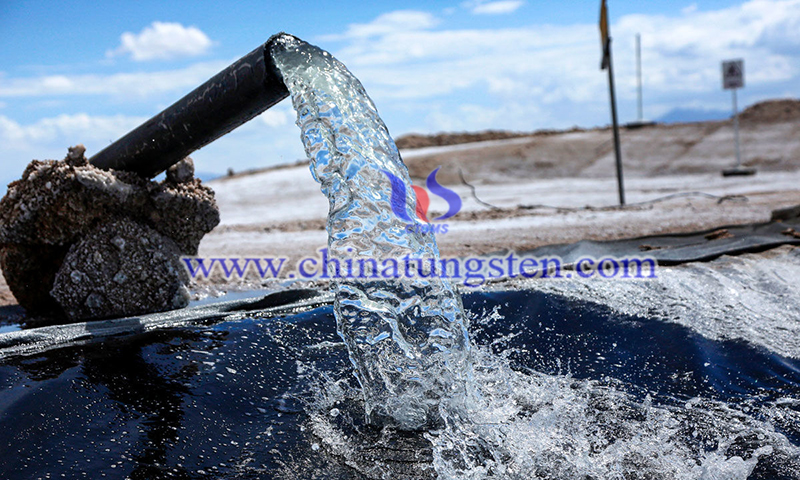Progress of Lithium Extraction from Seawater
- Details
- Category: Tungsten's News
- Published on Tuesday, 21 July 2020 19:34
Lithium extraction from seawater may address the growing demand for lithium of the booming electric vehicle sales in the future. However, lithium, the light metal, which is essential for making power-packed rechargeable batteries, isn't abundant in land, while in marine water is plenty. To address the resource issue, scholars report a major step toward tapping a virtually limitless lithium supply: pulling it straight out of saltwater.
Lithium is prized for rechargeables because it stores more energy by weight than other battery materials. From lithium extraction, it is estimated that there are 180 billion tons of lithium in saltwater, and the current global annual demand for lithium exceeds 160,000 tons. Even if the demand increases 10 times in the next ten years, the supply of lithium resources in seawater is more than sufficient. However, the saltwater contains only two parts per million of lithium, and it coexists with metals such as sodium and magnesium, making it difficult to extract lithium.

A group of scholars from Stanford University recently published an article in the world-renowned academic journal Joule, saying that they have used the positive and negative electrodes of lithium batteries to successfully increase the concentration of lithium in seawater, thus making overseas lithium production more economical and mass production.
The lithium-ion battery is a kind of rechargeable battery, which mainly relies on the movement of lithium ions between the positive and negative electrodes to work. The batteries use an intercalated compound as an electrode material, such as Li-iron phosphate, lithium cobalt oxide, and so on.
Seawater could come to the rescue. The marines contain an estimated 180 billion tons of lithium element. But it's dilute, present at roughly 0.2 parts per million. Researchers have devised numerous filters and membranes to try to selectively extract lithium from saltwater. But those efforts rely on evaporating away much of the water to concentrate the lithium, which requires extensive land use and time. To date, such efforts have not proved economical.
In the saltwater, a negative electrical voltage applied to a lithium-grabbing electrode pulls lithium ions into the electrode. But it also pulls in sodium, a chemically similar element that is about 100,000 times more abundant in saltwater than lithium. If the two elements push their way into the electrode at the same rate, sodium almost completely crowds out the lithium.
The first step of Stanford's solution is: they coated an electrode with a thin layer of titanium dioxide as a barrier. Because lithium ions are smaller than sodium, it is easier for them to wriggle through and into the electrode sandwich. The team also changed the way they controlled the electric voltage. Instead of applying a constant negative voltage to the electrode, as others had done, they cycled it. First, they applied a negative voltage, and then they briefly turned it off. Next, they applied a positive voltage, turned it off again, and repeated the cycle.
However, the current economics of this scheme do not own advantages, and it is not enough to compare with the cost of developing lithium mines on land. The research team is choosing other raw materials to test whether it can reduce the cost of lithium extraction from seawater.
- Tungsten Manufacturer & Supplier, Chinatungsten Online: www.chinatungsten.com
- Tungsten News & Prices of China Tungsten Industry Association: www.ctia.com.cn
- Molybdenum News & Price: news.molybdenum.com.cn
- Tel.: 86 592 5129696; Fax: 86 592 5129797; Email: sales@chinatungsten.com



 sales@chinatungsten.com
sales@chinatungsten.com